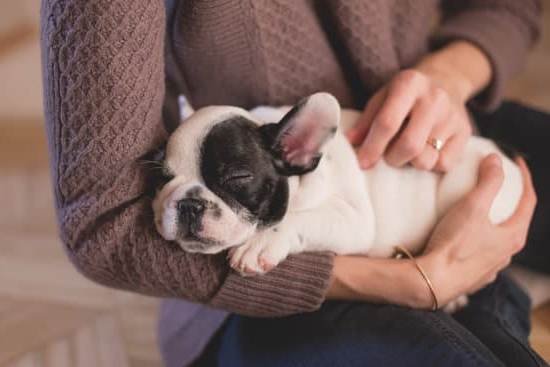Introduction
Are you moving into an apartment but don’t want to leave your dog behind? Training your canine companion for apartment or condo life is important to ensure they get settled safely and quickly — both physically and mentally. It can take some time before they learn the boundaries of apartment living and understand the special etiquette it requires. Here are a few tips on how to train your pup for stylish city living.
First, you should work on basic obedience commands with your pup. Teaching them the fundamentals like sit, stay, come, down and quiet will be essential for living happily in close quarters with other people and animals. This includes potty training too; if you’re already housebroken it will help tremendously when transitioning from home to an apartment setting. Make sure to use positive reinforcement as much as possible in order to encourage good behavior. You may also want to consider enrolling in obedience classes or working with a certified dog trainer if you feel like this would be beneficial for your particular situation.
Second, you should manage distractions within the apartment environment so that your pup won’t become easily overwhelmed by their new surroundings. Socialize by introducing them slowly to family members and other pets (if any) before allowing them out of their crate or leash-free in the home; this helps establish trust and creates a sense of security while starting off their new space together on the right foot. Additionally, create a space just for them — someplace calm and comfortable as an escape from all of the commotion that goes on during daily life — such as setting up a dog bed near one of their favorite windows or relaxing areas of your home to make them feel more at ease over time.
Finally, teach simple problem-solving techniques such as redirecting energy from destructive behaviors (such as barking or chewing) into more constructive outlets: through playdates with friends’ pups, commitment to regular exercise routines such as doggie daycare, long walks around the neighborhood park or even hiring a pet sitter/dog walker who can give Fido his much-needed “me time” while away from you!
Identifying Your Apartment’s Potential Challenges
When training a dog for apartment living, it is important to identify what potential challenges your space presents. Taking the time to think about this upfront will help you create an effective plan for addressing the obstacles and teaching your dog how to live comfortably in your particular living space. Consider whether the apartment has noise restrictions, thin walls which transmit sound easily, or other limits that could impact your strategy for training. For example, if your apartment complex has strict quiet hours that prohibit pet owners from verbal commands or pointing laser lights at the dog, then you will need to be creative with your approach. Think of alternate ways to encourage positive behaviors such as providing treats when an unwanted behavior isn’t exhibited or setting up ‘no bark zones’ where the pet can whine but not bark. Additionally, consider what types of distractions are common in your living environment (ie. people walking by outdoors) and how these movements may affect your pets behavior so that you can plan ahead with strategies to help them remain calm in new and exciting situations.
Designing a Structured Space for Your Dog
Creating a structured and comfortable space for your dog is critical to successful apartment living. You may want to invest in a crate or kennel, as this can serve as a safe and secure bedroom for your pup when you need to leave them alone. Make sure the crate is large enough for your pet to stand, turn around, and stretch out comfortably. Place familiar items such as toys and blankets inside it so that it feels like home.
It is also important to designate an area of your apartment specifically for your pet’s potty needs. Set up a raised puppy pad or litter box if needed. This will help teach your pup not to do their business anywhere else in the apartment building. Additionally, it might be helpful to set up boundaries within the apartment using baby gates or other barriers so that your pup does not have access to off-limit areas like trash cans or furniture edges. To reinforce the boundaries, use positive reinforcement methods (treats etc.) when they stay within those areas and avoid scolding if they cross the line.
The Benefits of Exercise and Play
Exercising and playing with your dog is essential no matter what their living space may be. For apartment living, exercise and playtime become even more important since there are limited physical outlets. Taking your dog for regular walks, outside trips to the park, or engaging them in active games will all provide physical and mental stimulation they need while encouraging better behavior and reinforcing strong bonds between you and your pet.
In addition to walks, the park and active games, it is also beneficial to engage in various training exercises. Training not only reinforces obedience lessons but can also create excellent bonding opportunities. For something simple yet rewarding start by introducing basic commands like sit, stay, come and down. Guide your pup through each command step-by-step, providing positive reinforcement as you go along such as verbal praise and treats for a job well done. As your pup masters certain commands slowly build up the difficulty level to challenge their mind & skill set over time. A well-trained dog is one who understands consistent guidelines & will exhibit calmer behavior when within their home environment or out in public. Overall this help provide an enjoyable experience in apartment life both for you and your pet!
Engaging Your Dog with Mental Stimuli
If you are living in an apartment with a dog, it is important to keep your pup mentally stimulated and engaged. One way to do this is by teaching them new tricks and commands like ‘sit’, ‘lie down’, ‘stay’ or ‘come’. You can also use interactive toys that provide stimulating activities such as hidden treat puzzles and food dispensing balls to encourage the canine fulfillment of hunger-induced playtime. Additionally, you can create fun obstacle courses in the living room to enhance their agility training while providing a mental challenge they would enjoy conquering. As a last resort, you can take your pup on enjoyable walks throughout the neighbourhood; however, it is important to remember that if they are leash trained, care should be taken with respect to other people and animals they may encounter during these walks.
Setting Training Goals and Routines
Having a solid training plan can make all the difference when teaching your dog how to live in an apartment. Make sure that you are setting achievable, realistic goals that can be broken down into smaller steps. You should also create consistent routines so that your dog knows what to expect and can anticipate certain activities throughout the day. Start off with simple commands like “sit” and “stay,” then progress to more advanced behaviors like establishing boundaries within your home and basic rules such as not jumping up on furniture or barking in excess amounts. Use positive reinforcement methods like treats or verbal praise to reinforce good behavior rather than punishing bad behavior. After teaching certain commands or behaviors, practice them often by doing short training sessions to help your pup remember what he has learned over time. Stick to the same schedule for consistency so that your pet will become accustomed to having set bedtimes and meals each day—this helps boost his understanding of acceptable apartment living habits.
Consistency and Patience
Training a dog for apartment living requires consistency and patience, as there may be busy periods and unexpected scenarios that the animal may have to adjust to. One of the most important things to establish right away is housebreaking — teaching the pet where it is acceptable to ‘do its business’. This needs to involve a set routine, frequent trips outside, and positive reinforcement when your dog follows the rules.
When training your pet for apartment living, ensure that they know each room in which they are allowed access, along with boundaries and limitations regarding furniture, chewables and forbidden items such as their own waste or rubbish bins. Additionally, introducing cues such as sitting and down can help keep them in control if there are sudden noises or visitors. Noise desensitization can also be an excellent idea — playing recordings of everyday life noises (such as a vacuum cleaner) at low levels over time to get them used to hearing these sounds without feeling scared or agitated. Finally, exercise is also key — providing ample playtime outdoors so that they can expend their energy and remain happy in the confines of an apartment environment long term.
Effective Use of Positive Reinforcement
Training a dog for apartment living can be a challenge, but by using positive reinforcement techniques, we can help our pup learn and adjust more quickly. Positive reinforcement involves rewarding behavior that is desirable while ignoring actions that need to be corrected. This can take the form of giving verbal praise when your pup follows commands or performs desired activities like toileting outside or practicing good manners while in the presence of other people. You can also reward them with treats and toys when they do something right. Additionally, it works best if you focus on rewarding behaviors sought out in favor of punishing bad behaviors like barking or chewing. As time goes on and your pup gets used to apartment life, the reliance on rewards will ultimately decrease as your pup learns what is expected of them in this environment.
Crate Training Strategies
Crate training is an important tool for helping your dog to become accustomed to apartment living. Setting up a dog crate in your home is an excellent way to give your pup their own space with familiar surroundings. Your pup will feel safe and secure when they are inside of their crates, and it also provides you with control over destructive behaviors like chewing or barking. When you are first introducing the crate, focus on positive reinforcement. Place treats inside the kennel to encourage your pup to explore it and make them associate the crate with something pleasant. Once they begin entering and exiting on their own, gradually increase the length of time that your dog can stay inside of their crate. If done correctly, this approach should make it easier for your pup as they transition into apartment living while also reducing stress levels related to confinement in unfamiliar environments.
Setting Rules and Boundaries
A crucial step in training your dog for apartment living is creating rules and boundaries. It’s important to establish established routines and boundaries to ensure that everyone living in the apartment is comfortable and safe. This can include creating a schedule with specific times for meals, walks, and playtimes, as well as house rules such as where the dog can go, what furniture (if any) he can get on, quiet time expectations, etc. You’ll also want to determine where the dog will sleep or rest, since most apartments do not allow dogs on the furniture. Providing a special bed or crate for when the owners are away from the home is a good idea. And finally it’s important to identify what areas of the home are off-limits for your pup–this includes keeping him out of private bedrooms and bathrooms.
Avoiding Potty Accidents
One of the biggest concerns for dog owners living in an apartment is avoiding potty accidents. In order to properly train your pooch, it is important to identify their bathroom habits and understand their individual needs. Start by planning regular potty breaks outdoors as soon as you get your pup home. Be sure to consistently work towards a schedule that both you and your pup can keep up with and be consistent with it. Every time you bring your pup out for a bathroom break, always use the same cues or commands so that they can quickly learn where to do their business. Additionally, immediately reward them verbally or with treats when they finish going potty outside as this will help them to remember what is expected from them each time. As always, be patient and consistent with potty training and you’ll soon have a well-mannered pet ready for apartment life!
Strategies for Dealing with Barking
One of the most effective ways to deal with excessive barking from a pet dog living in an apartment is to create a structured environment for them. It’s important to establish clear rules and boundaries. Make sure your pup has access to plenty of toys and fun activities so they can keep themselves entertained during times when you are not at home. Additionally, regular exercise can help reduce boredom as well as fear levels that may lead to barking. This can be done either by taking them on regular walks around the neighborhood or having playtime with them in the apartment’s outdoor space if available.
Another strategy for reducing excessive barking is through positive reinforcement training. Whenever your furry friend barks, instead of reprimanding, reward them whenever they bark ‘quietly’ instead. This reinforces the behavior you want them to learn and may make it easier for them to learn quickly when they know their good behavior will be rewarded. Finally, it is important to provide consistent reinforcement – offering praise or treats whenever they display good behaviors – so they know what is expected of them and understand that there are certain behaviors that are preferred within an apartment complex.
Training Your Dog to Walk in the Neighborhood
Apartment living with a dog can be enjoyable and rewarding if you properly train them. When it comes to training your dog for apartment living, one of the first things to focus on is teaching them how to appropriately act while walking around in the neighborhood. This includes teaching them proper behaviors such as not jumping on or barking at other people or animals. Another important skill for walking in the neighborhood that every pet owner should teach their pup is “heel”. Teaching them this command will help ensure that they stay close to you and do not get distracted by their surroundings while out and about. Additionally, it is useful to practice using a leash around other distractions such as delivery people and children playing during your walks since these are situations your pup will likely come across while spending time outdoors in the neighborhood. Finally, practice commands with rewards-based training so that your dog will understand acceptable behaviors without being shouted at or scolded. Following these rules and taking the time to properly train your pet dog makes apartment living much smoother!
Conclusion
When it comes to training your dog for apartment living, the most powerful training tool that you possess is love and kindness. While teaching your dog commands and tricks, be patient and understanding. Praise your pup for even the small successes so that he learns more faster. Finally, don’t forget to enjoy the process of bonding with your pup – quality time in the form of walks and cuddles go a long way in instilling good behaviors in your furry friend. Furthermore, positive reinforcement will strengthen the relationship between you and your pup, leading to better obedience all around.
By investing love and kindness into training your pup, you can help him understand what is an acceptable behavior inside an apartment. Dogs can pick up on our emotions really well, so providing consistency and stability with a calm but firm voice will lead to long-term success. To create an environment of trust, reward them after sound response to commands or tricks are made and give them treats or words of encouragement whenever they have performed correctly or exceeded expectations during training sessions. Additionally, taking time to play with them outdoors or engaging in activities such as hide-and-seek when indoors can contribute positively towards their understanding of how to behave appropriately inside an apartment unit. Remember that training should be prioritized over punishment – giving patience and love to a pup will yield far better results than reprimanding them does! Lastly, ensure that you also keep regular potty breaks for your pup’s physical health before progressing further in their behavioral trainings at home; this contributes much to their overall comfortableness within their crowded living quarters!

Welcome to the blog! I am a professional dog trainer and have been working with dogs for many years. In this blog, I will be discussing various topics related to dog training, including tips, tricks, and advice. I hope you find this information helpful and informative. Thanks for reading!





